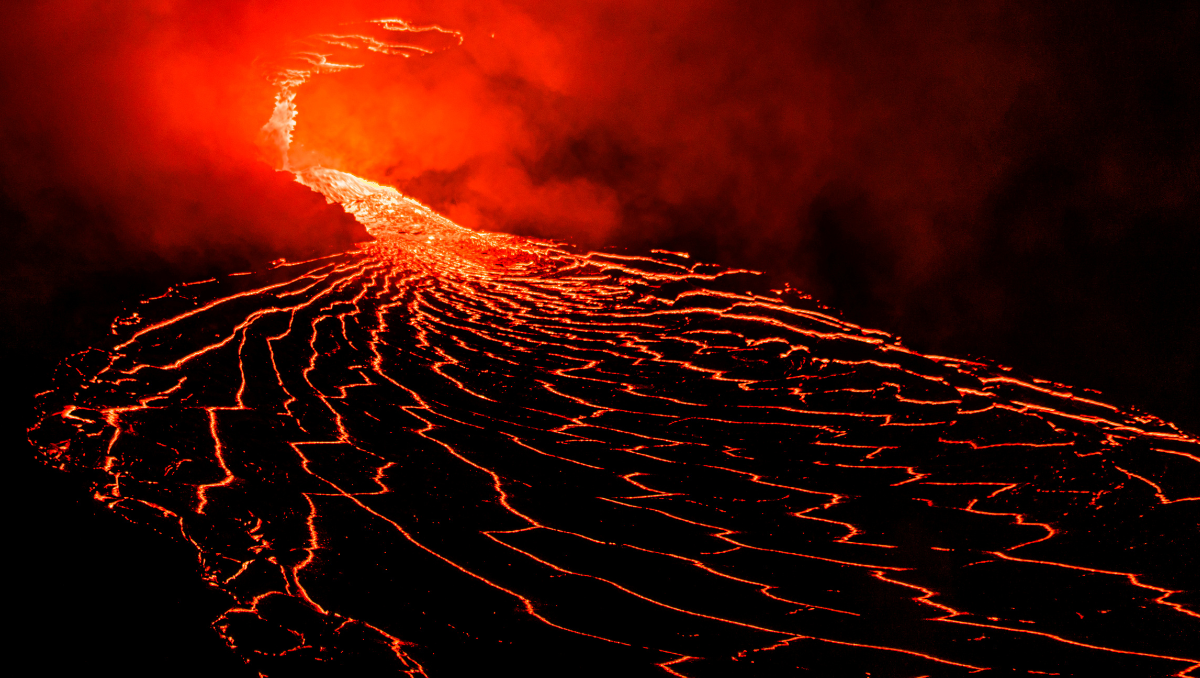Wednesday was the fifth eruption of a volcano in southwest Iceland since December, sending large flows of lava spilling outward, threatening to shut off the town of Grindavík and forcing the famous Blue Lagoon to be evacuated.
A volcano spews lava in Grindavík, Iceland, on May 29, 2024. Marco di Marco/AP
“the first estimate of scientists is that the start of this eruption is more vigorous than in previous eruptions in the area.”
Iceland’s Meteorological Office
Table of Contents
Volcano Eruption on Wednesday
Following an earthquake near the Sundhnúks crater on Wednesday at around 1 p.m. local time, Iceland’s state radio RUV reported that an eruption had started. Prior to this, the Met Office had issued a warning, citing “intense seismic activity” near the crater and a build-up of magma in its subterranean reservoir as probable causes of a volcanic eruption.
Two of the three highways connecting to the fishing village of Grindavík have been sealed off by lava flows, which have been progressively progressing along a defensive barrier constructed to prevent the town and important infrastructure from being destroyed.
Current situation at Grindavík
“Lava is flowing outside the defense walls at Grindavík in several places, and lava is also starting to flow outside the walls at Svartsengi.”
Víðir Reynisson from Iceland’s Civil Defense told RUV
Grindavík may soon be totally cut off, even though the defense walls were holding. If it weren’t for the protective walls, the homes in the western and furthest regions of the town would have been submerged under the lava, but they are still standing and providing protection.
About 3,000 residents of the town of Grindavík were largely evacuated prior to an earlier eruption in December. Though three inhabitants are refusing to evacuate, police informed RUV, that the remaining residents and responders in the town have been asked to leave while they still have the opportunity.
Due to the lava flows closing in on underground hot and cold pipes and high-voltage lines, Grindavík lost electricity on Wednesday as a precaution.
According to its operations manager, the nation’s well-known geothermal spa and popular tourist destination, the Blue Lagoon, was evacuated for the third time in less than two months.
There has been no interference to domestic or foreign aircraft, according to a post on X by Iceland’s Ministry of Foreign Affairs.
Volcanic eruption seen from helicopter on Reykjanes peninsula in southwestern Iceland on May 29, 2024. Almannavarnadeild/Anadolu/Getty Images
The root cause of Iceland’s high levels of volcanic activity
This country’s geographic position is the reason it is experiencing so massive volcanic activity. These volcanoes erupt at the Mid-Oceanic Ridge, which marks the border between the tectonic plates of North America and the Eurasian plate.
Dynamic geological forces are produced by endogenous forces that are found inside the Earth. Large volumes of magma are produced as a result, which causes frequent eruptions.
Because of its surreal scenery of mountain peaks, ice fields, and fjords—a seismic hotbed situated between the Eurasian and North American tectonic plates—residents of Iceland refer to the country as the “Land of Fire and Ice.”
Red-hot lava jets shot skyward along a 3.4-kilometer (two-mile) fissure near Mount Hagafell on the Reykjanes Peninsula. A live video of the eruption is below:
Precautions to follow
During the eruption
- Warnings should be followed. Pay attention to road, drinking water, and air quality updates, as well as local authorities’ directions.
- Avoid places downwind and downstream of the volcano, and leave as soon as possible, if advised.
- If you are unable to flee, find a temporary place to hide from the ash and stay where the wind is blowing. Steer clear of low-lying areas where gas may collect.
- Take precautions: wear long sleeves, long pants, goggles, and a N95 respirator that has been authorized by NIOSH.
- Use a dust mask or cover your mouth and nose with a moist cloth if you don’t have a N95 respirator.
After the eruption
- Wait for the authorities to declare it safe to leave the house and stay inside.
- Protect your house: Place damp towels at draft sources and close all windows, doors, and dampers.
- Additionally, you can seal leaky windows and insert stoppers into your drainpipes.
